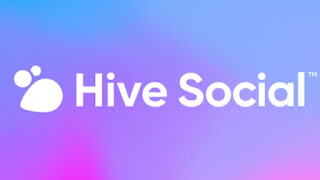I know I said last week that I would delve into Mastodon and cover the how-to things. But on further consideration, it seemed better to give you more alternatives for Twitter. As these are social media apps and not technical writing or marketing apps, I think you can navigate them with ease. Hit me up if you get stuck, though.
Be aware there is also a project management app also named Hive. This might be a great resource for writers, but we are talking about social media today.
Hive Social is a social media app similar to Twitter. It allows users to post, make friends, and follow social trends. Reportedly, it does not have complicated algorithms to influence what you see or hear. It’s available at the Apple Store and Google Play. There is no desktop version currently.
Guidelines for the app ask users to be appropriate with their posts and keep things spam-free. They also have a strict privacy policy to protect you and your personal information, but like any app, it will collect some data.
Download the app to your mobile device and create an account. You can use your Google credentials or just an email. Once you verify your account, you need to make a display name and a unique username. Next, the app asks your interests. Now you are ready to go.
The app looks very much like Twitter. On the bottom, the menu items are Discover, Search, Post, Notifications, and Profile.
Under your profile, you can add your picture, a banner, other social media links, a bio, your pronouns, and even display your zodiac sign. There’s a button for music, but this option is under construction. There’s a question-and-answer section where users ask you questions. Click on the gear for options like turning off questions, allowing anonymous questions, and who is allowed to ask.
On your profile page, you can sort how you view your posts—linear, gallery, or something I can’t quite figure out yet. The Aa button doesn’t give me a hint, but I’m searching. If anyone knows, post in the comments!
Click the gear to add more info and settings to your account like phone number, and see posts you’ve liked. The security tab allows you to block certain words (like Instagram does with spam words), turn on mature content (under NSFW), choose who can comment, show muted, and blocked accounts. You can also change your colors, music, and questions here.
Note: Apparently, Hive Social is a newish startup. According to the articles I found, there are two, yes two, people running this app. Since the announcements about Twitter, they’ve had a deluge of users sign up. Please be patient with the app as it goes through some growing pains.



